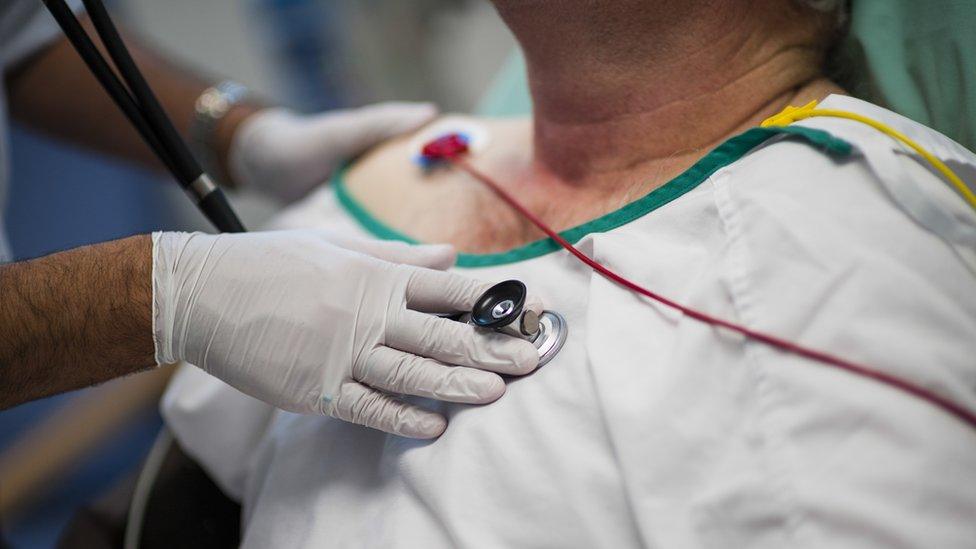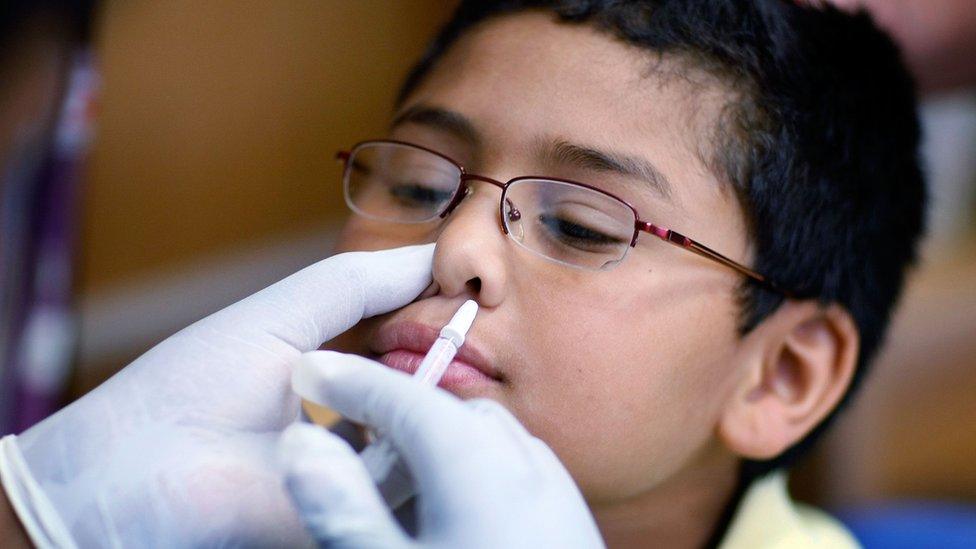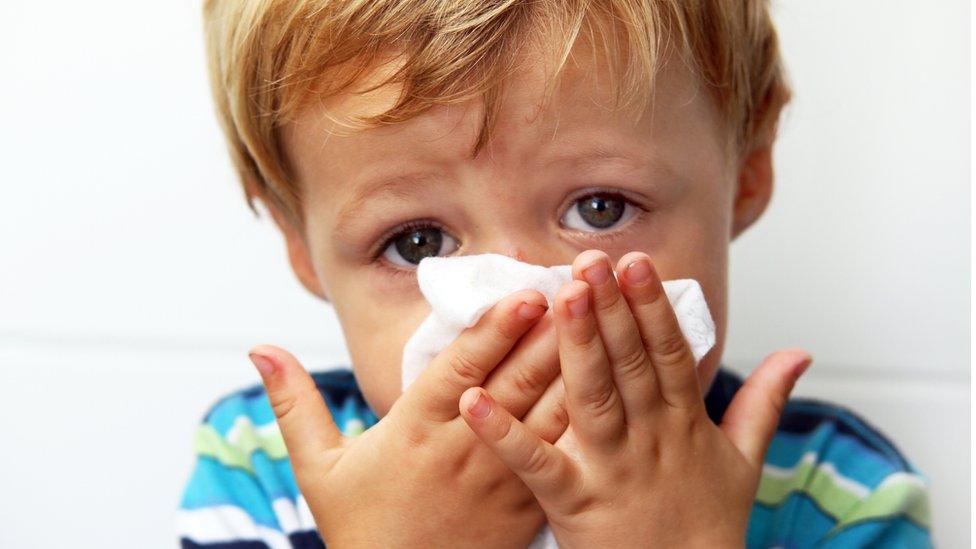Political heat eases but NHS chill sets in
- Published

Emergency admissions to hospitals have been increasing
The politicians will be looking forward to their Christmas break, their ferocious debates on the NHS and other domestic issues temporarily put on hold.
But just because the political rhetoric has eased does not mean the state of the NHS is less of a concern. Far from it.
The health service is experiencing its toughest climate for some time and things met yet become even more difficult with patient numbers expected to surge as usual after the seasonal holiday.
Most of the campaign manifesto pledges focused on longer-term recruitment plans for thousands more GPs and nurses, and promises to build new hospitals.
But none of that can help tackle the immediate challenges facing the NHS. The flu season seems to have come early and patients are enduring lengthening waits.
A new low for A&E performance in England was recorded in recent figures published 24 hours after polling day, when attention was on the election results.
Fewer than 82% of patients were treated or assessed within four hours in November. The statistics for Wales in November show the worst-ever A&E performance, with the proportion seen in four hours dropping below 75%.
More patients
Staff should not be held responsible for the declining performance against the A&E target.
They are seeing more patients, year-on-year. Its just that the capacity of the NHS to handle the workload has not kept pace with demand, so the proportion dealt with in four hours has fallen.
Workforce shortages and rota gaps have made the job harder.
This means longer waits and more frustration for patients. The NHS England data for November revealed that nearly 89.000 people had to wait more than four hours for a hospital bed to be found, the so-called trolley waits, which was a record high. And that was on top of waits of a few hours or more to be assessed in A&E.
The latest weekly winter situation reports from NHS England gave a further perspective on the mounting pressure.
Analysis by the NHS Confederation, external shows that in the week ending 15 December there were more than 16,000 ambulances which had to wait more than 30 minutes to hand over their patients at A&E, up from fewer than 9,500 in the same week the previous year.
Hospitals were close to full with the bed occupancy rate at 94.9%, up from 93.4% in the same week in 2018.
The Confederation says its members around the NHS fear this could be the worst winter on record with things getting tougher over the next few weeks.
Flu fears
Then there is flu. The weekly update from Public Health England says that flu-related admissions to hospitals remain at moderate levels.

The flu vaccine is available as a nasal spray for children
But alarm bells are ringing at GP surgeries. The number of patients reporting influenza-like illness to GPs was 16 per 100,000 in the latest week, nearly double the rate in the same week last year.
Officials confirm that the flu season has started. They say outbreaks in the north of England are most pronounced, with the virus spreading outwards.
What is not clear is whether this earlier start to flu might simply mean the season has shifted forward. But it could be that the virus is going to be around for longer this winter.
Its become a cliche to say that the NHS is running at full capacity each winter and a severe flu outbreak or bad weather will push it over the edge.
Margins are very tight. There is no time left for political intervention this winter.
Ministers can only wait and watch from the sidelines in the months ahead, even as they continue their longer-term planning for the NHS.
- Published16 December 2019

- Published13 December 2019

